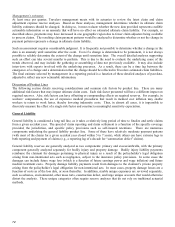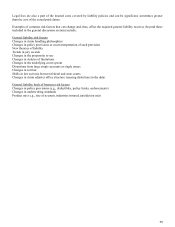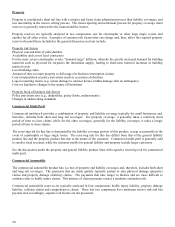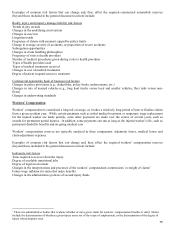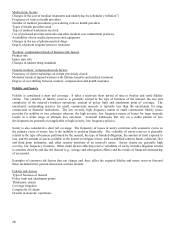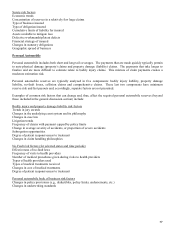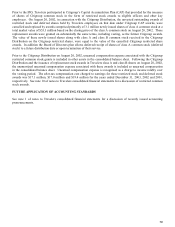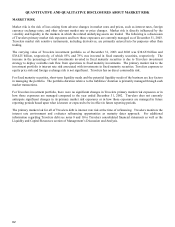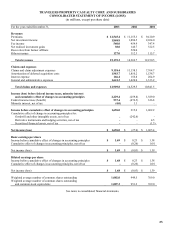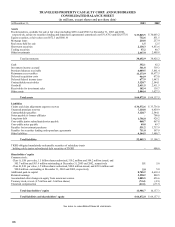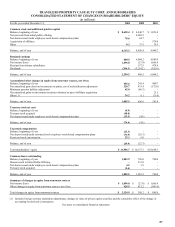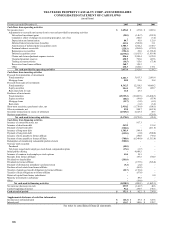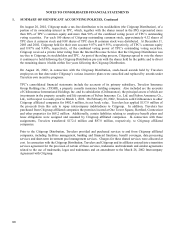Travelers 2003 Annual Report Download - page 84
Download and view the complete annual report
Please find page 84 of the 2003 Travelers annual report below. You can navigate through the pages in the report by either clicking on the pages listed below, or by using the keyword search tool below to find specific information within the annual report.82
QUANTITATIVE AND QUALITATIVE DISCLOSURES ABOUT MARKET RISK
MARKET RISK
Market risk is the risk of loss arising from adverse changes in market rates and prices, such as interest rates, foreign
currency exchange rates, and other relevant market rate or price changes. Market risk is directly influenced by the
volatility and liquidity in the markets in which the related underlying assets are traded. The following is a discussion
of Travelers primary market risk exposures and how those exposures are currently managed as of December 31, 2003.
Travelers market risk sensitive instruments, including derivatives, are primarily entered into for purposes other than
trading.
The carrying value of Travelers investment portfolio as of December 31, 2003 and 2002 was $38.653 billion and
$38.425 billion, respectively, of which 85% and 78% was invested in fixed maturity securities, respectively. The
increase in the percentage of total investments invested in fixed maturity securities is due to Travelers investment
strategy to deploy available cash flow from operations to fixed maturity investments. The primary market risk to the
investment portfolio is interest rate risk associated with investments in fixed maturity securities. Travelers exposure to
equity price risk and foreign exchange risk is not significant. Travelers has no direct commodity risk.
For fixed maturity securities, short-term liquidity needs and the potential liquidity needs of the business are key factors
in managing the portfolio. The portfolio duration relative to the liabilities’ duration is primarily managed through cash
market transactions.
For Travelers investment portfolio, there were no significant changes in Travelers primary market risk exposures or in
how those exposures are managed compared to the year ended December 31, 2002. Travelers does not currently
anticipate significant changes in its primary market risk exposures or in how those exposures are managed in future
reporting periods based upon what is known or expected to be in effect in future reporting periods.
The primary market risk for all of Travelers debt is interest rate risk at the time of refinancing. Travelers monitors the
interest rate environment and evaluates refinancing opportunities as maturity dates approach. For additional
information regarding Travelers debt see notes 8 and 10 to Travelers consolidated financial statements as well as the
Liquidity and Capital Resources section of Management’s Discussion and Analysis.


